Best gaming routers of 2025
Get a competitive edge with one of the best gaming routers

The best gaming routers not only offer top-notch performance for lag-free online gaming but they also stand out from the crowd with their unique designs, RGB lighting and extra features you won’t find anywhere else.
To determine which gaming routers provide the best experience, we put them through extensive real-world testing. From running network benchmarks at multiple distances to measure their speed and range to taking a close look at their gaming specific features like bandwidth priortization, we’ve put all of the routers on this list through their paces.
Based on our extensive benchmarking, the best gaming router overall is the Asus GT-AXE11000. This Wi-Fi 6E-powered gaming router offers incredible throughput with a range of 85 feet, excellent customization options and a dedicated gaming accelerator. If you’re looking for a gaming router that can fill your whole house with a strong Wi-Fi signal though, then the Asus ROG Rapture GT6 fits the bill as it’s actually a mesh Wi-Fi system built with gaming in mind.
There’s lots of other great gaming routers we recommend for different use cases and budgets based on our reviews. Here are the best gaming routers you can buy right now.
The quick list
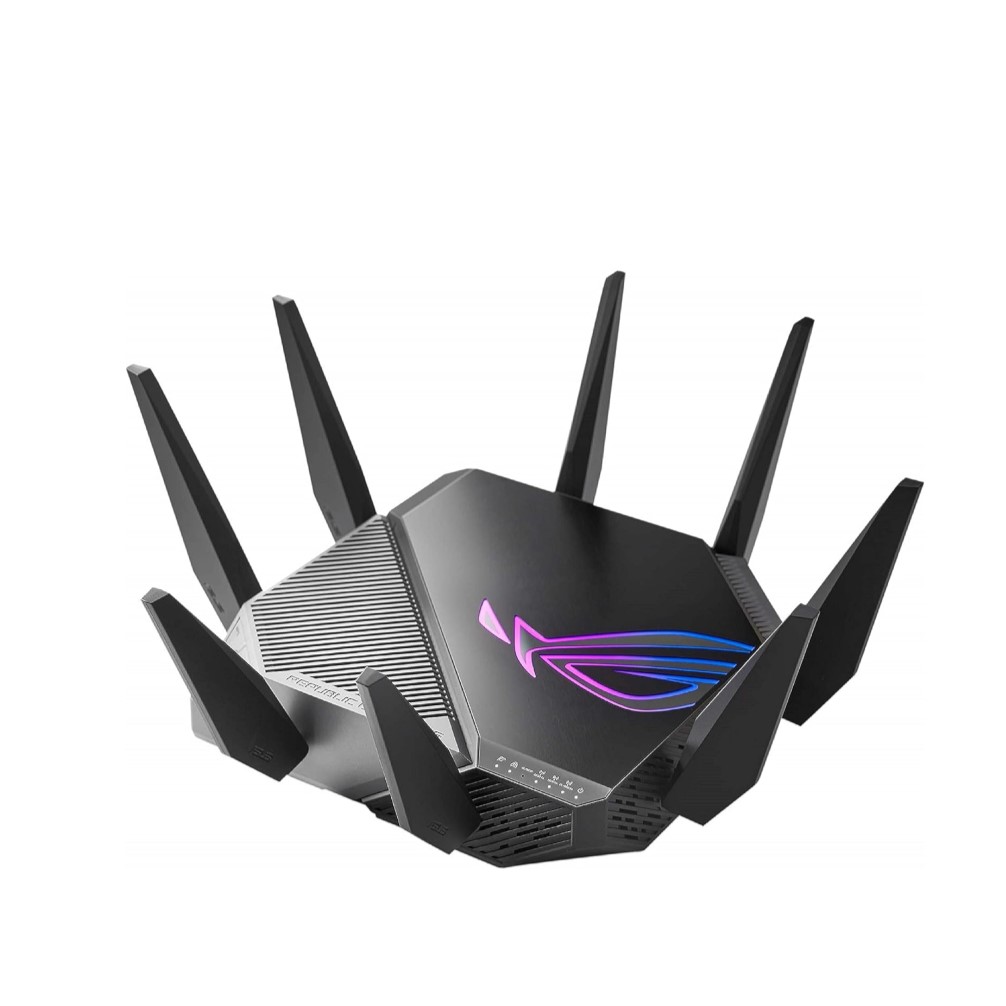
The Asus GT-AXE11000 is a Wi-Fi 6E-powered gaming router with a gigabit WAN port, a 2.5G WAN port, four downstream Ethernet ports and two USB 3.2 ports. In our testing, it reached a max speed of 2.96 Gbps at 15 feet with a range of 85 feet.
Read more below
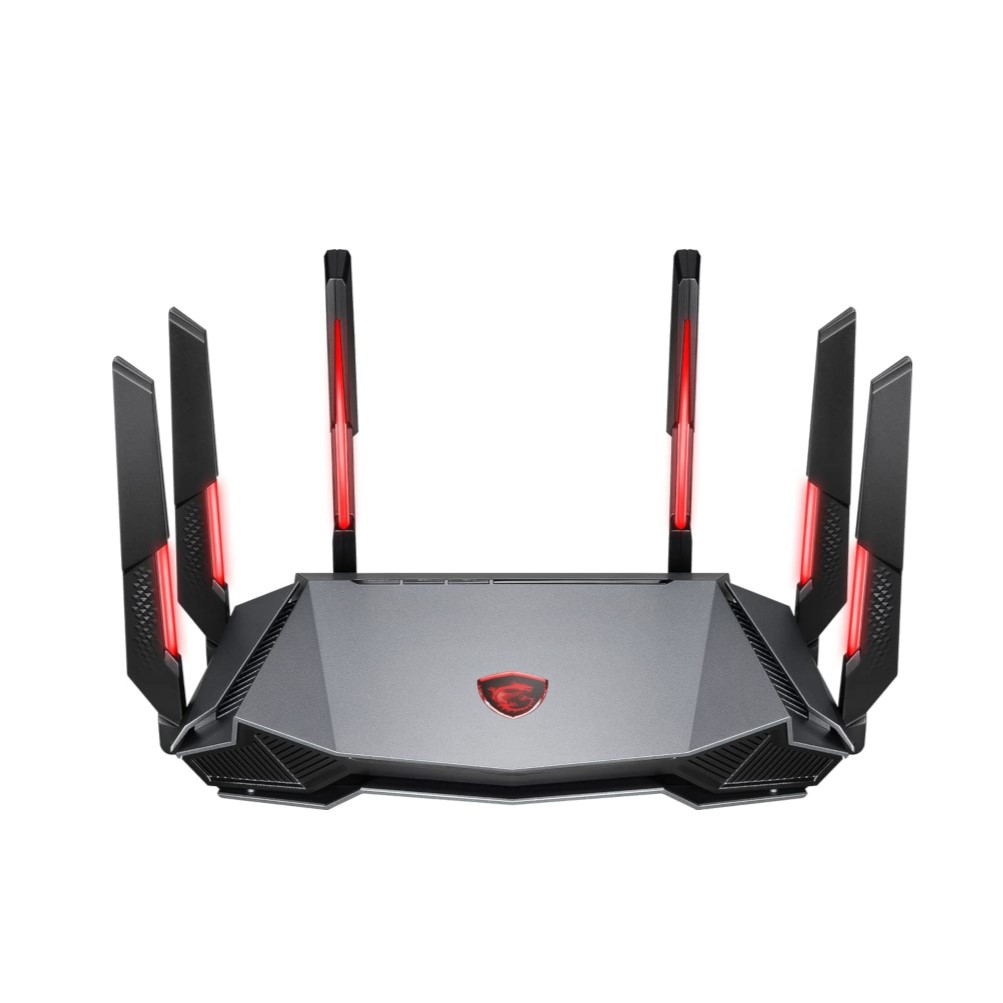
The MSI RadiX AXE 6600 is a Wi-Fi 6E-powered gaming router with a 2.5G WAN port, four gigabit Ethernet ports and a USB 3.0 Port. In our testing, it reached speeds of up to 1.4 Gbps at 15 feet with a range of 85 feet.
Read more below
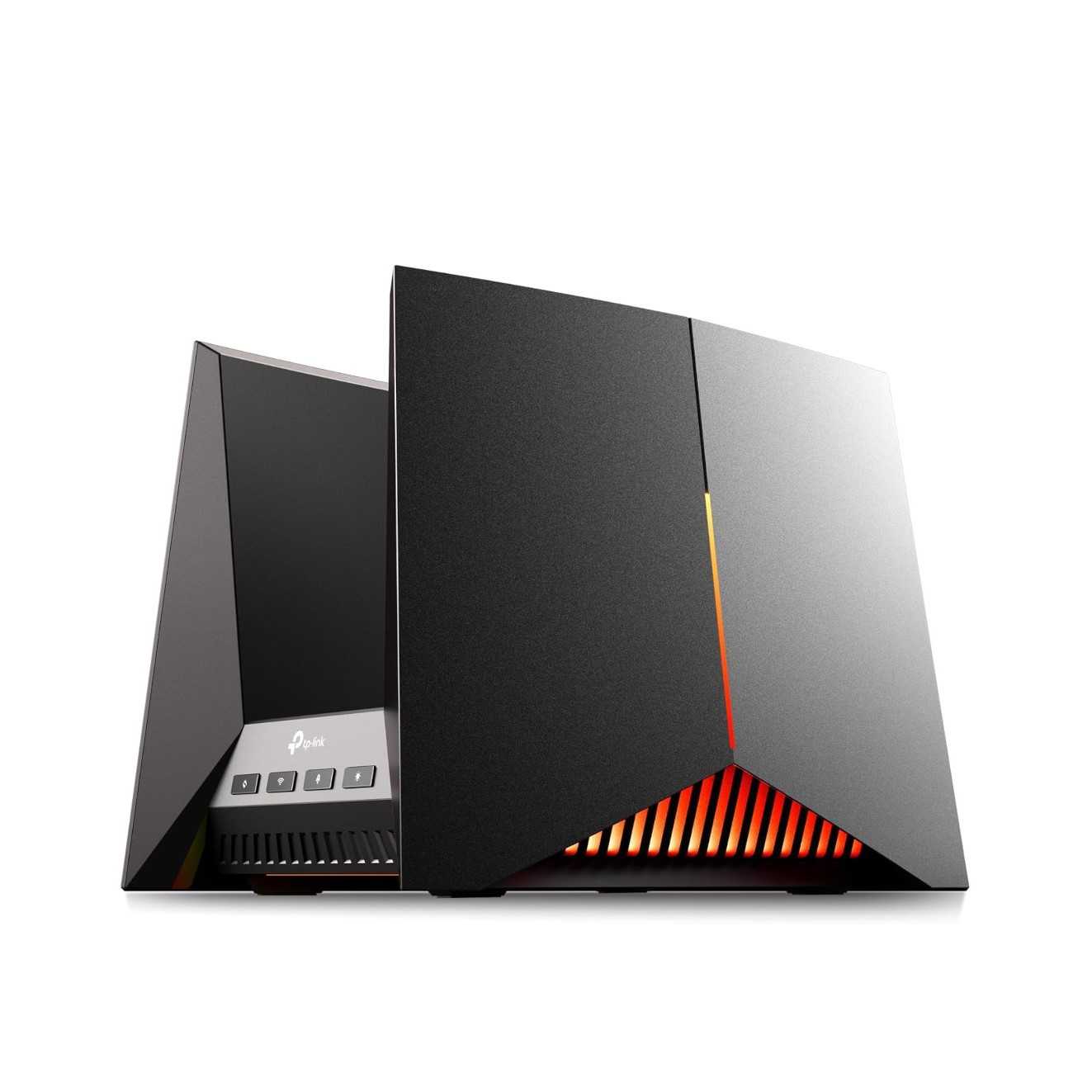
The TP-Link Archer GE800 is a Wi-Fi 7-powered gaming router with two 10 Gbps WAN/LAN ports, four 2.5 Gbps LAN ports, an SFP+ port for fiber internet and a USB 3. Port. In our testing, it reaches speeds of 1.322 Gbps at 15 feet with a range of 105 feet.
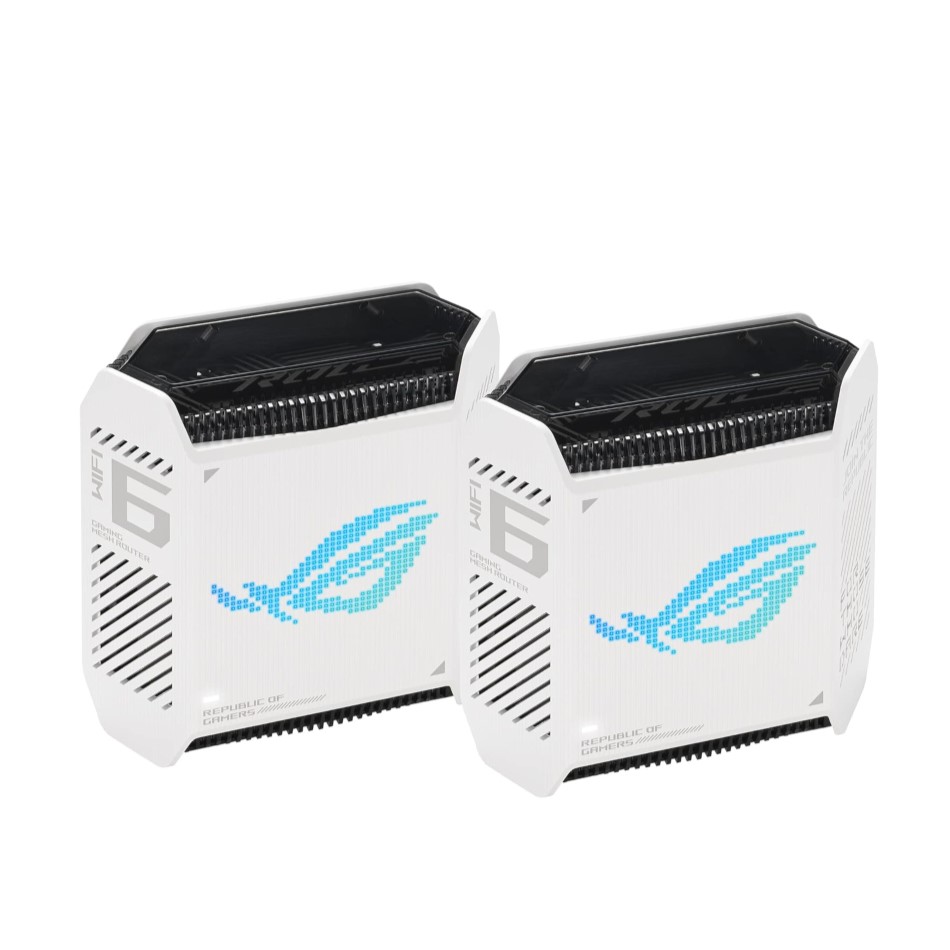
The Asus ROG Rapture GT6 is a Wi-Fi 6-powered mesh Wi-Fi system designed for gamers with a 2.5G WAN port, three gigabit Ethernet ports and a USB 3.2 port. In our testing, it reached speeds of up to 1.36 Gbps at 15 feet with a range of 95 feet.
Read more below
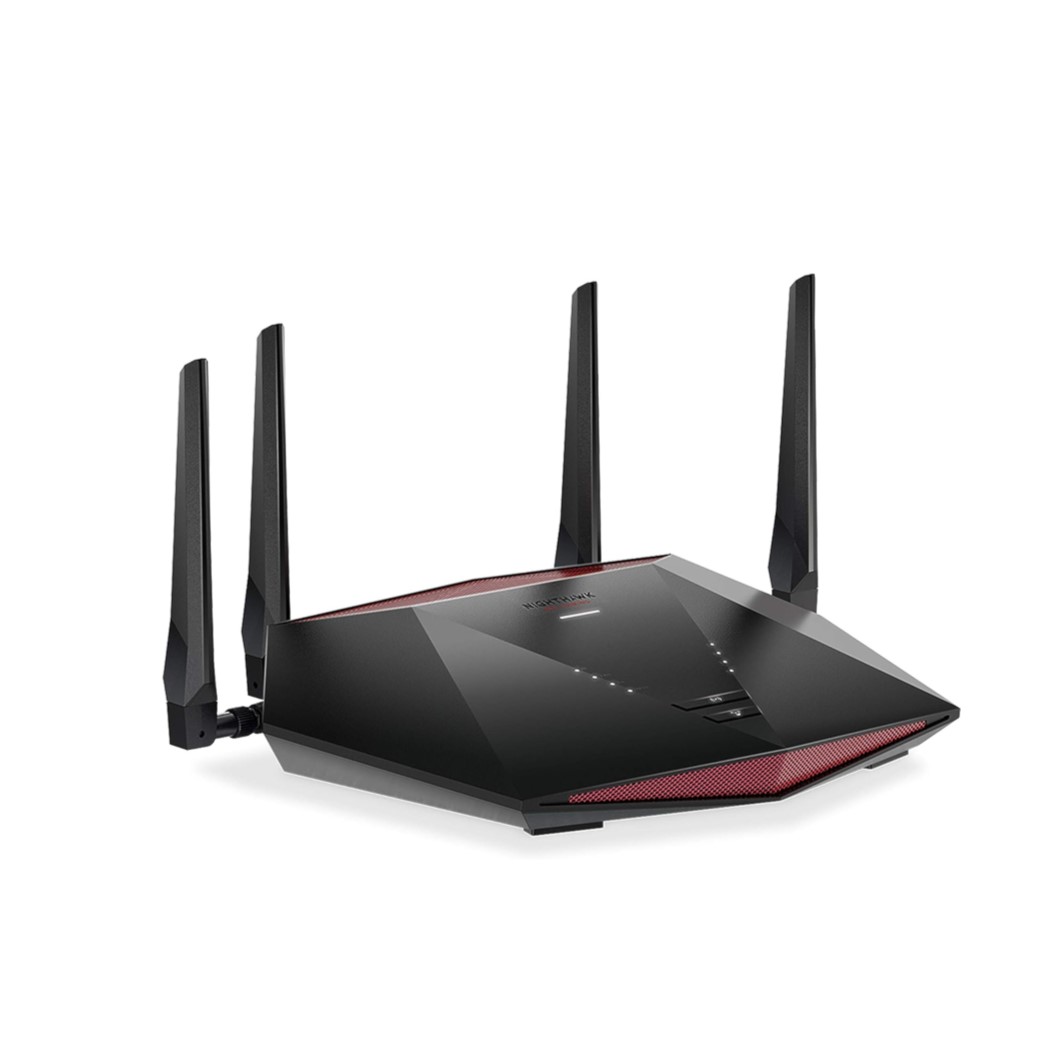
The Netgear Nighthawk XR1000 is a Wi-Fi 6-powered gaming router with a gigabit WAN port, four gigabit Ethernet ports and a USB 3.0 port. In our testing, it reached speeds of 860 Mbps at 15 feet with a range of 105 feet.
Read more below
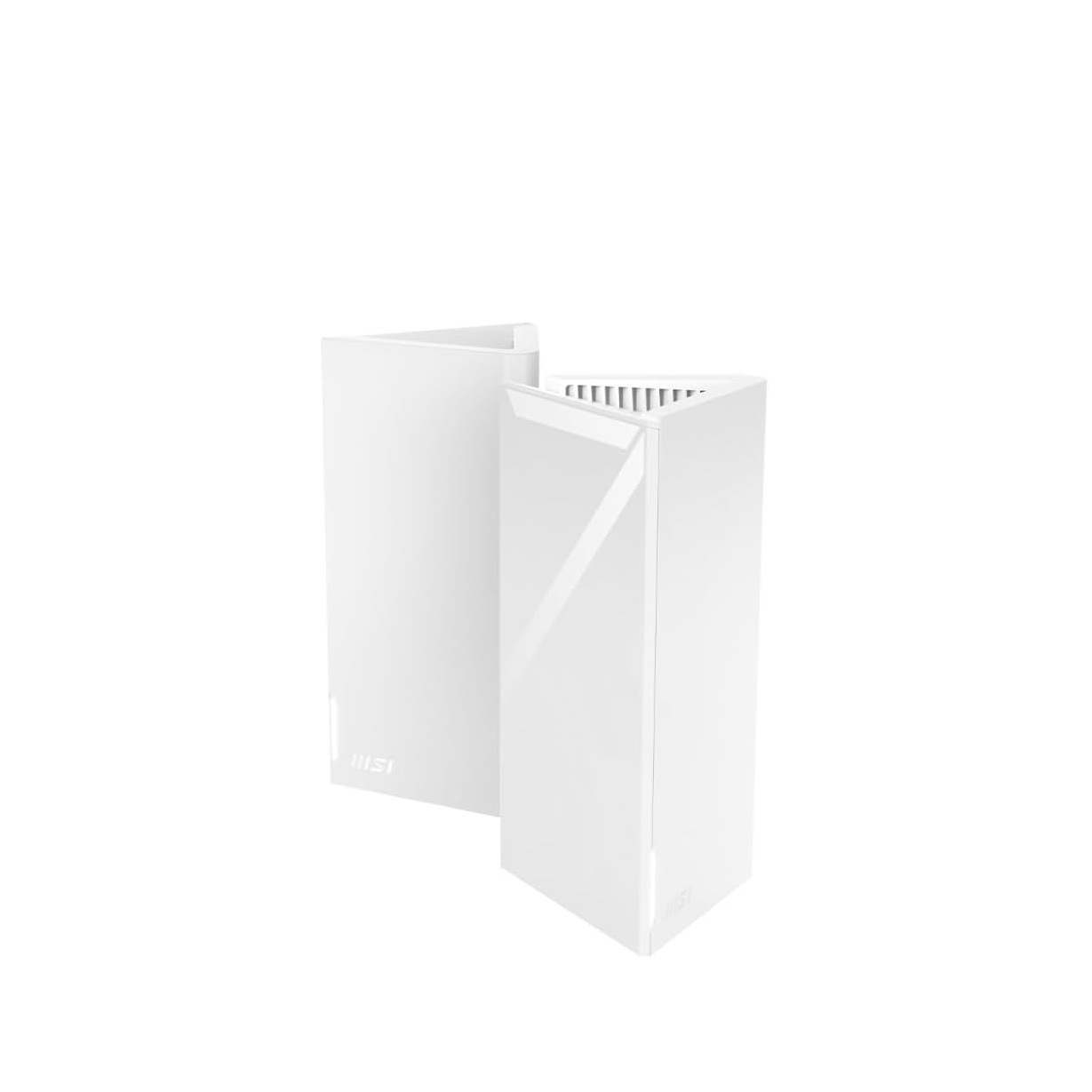
The MSI Roamii BE Lite is a dual-band Wi-Fi 7-powered mesh router with a 2.5G WAN port and two gigabit Ethernet ports. In our testing, it reached a top speed of 970 Mbps at 15 feet with a range of 105 feet.
The best gaming routers you can buy today
Why you can trust Tom's Guide
The best gaming router overall
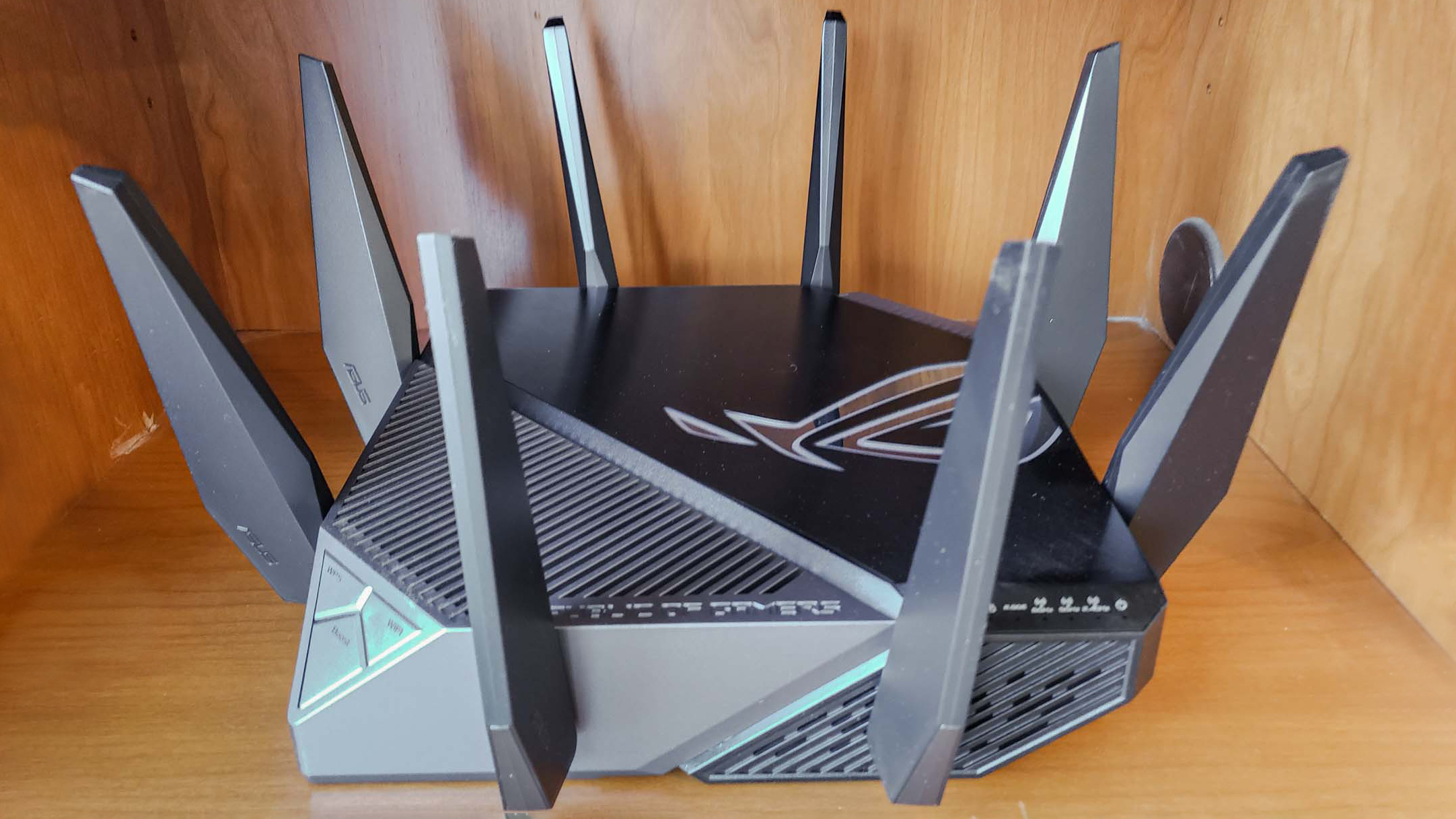
Specifications
Reasons to buy
Reasons to avoid
When it comes to the best gaming router, performance takes the prize. The Asus GT-AXE11000 is a Wi-Fi 6e powerhouse that delivers great speeds and killer gaming features, as well as awesome customization options.
With high-end performance and lifetime protection against intrusions and malware, it's also a great option for securing your entire home network, providing long term protection without a subscription fee, and carrying a two-year warranty with VIP support.
The Asus GT-AXE11000 is a tri-band router capable of pushing data over the 2.4-, 5- and 6GHz Wi-Fi bands using seven new high-performance 160MHz data channels. However, its throughput fell off quickly in our tests which is why you'll want to use this gaming router in the same or an adjacent room.
The Asus GT-AXE11000 provides you with buckets of data at a very reasonable price with the features, support and customization options on hand.
Read our full Asus GT-AXE11000 review.
The best gaming router on a budget
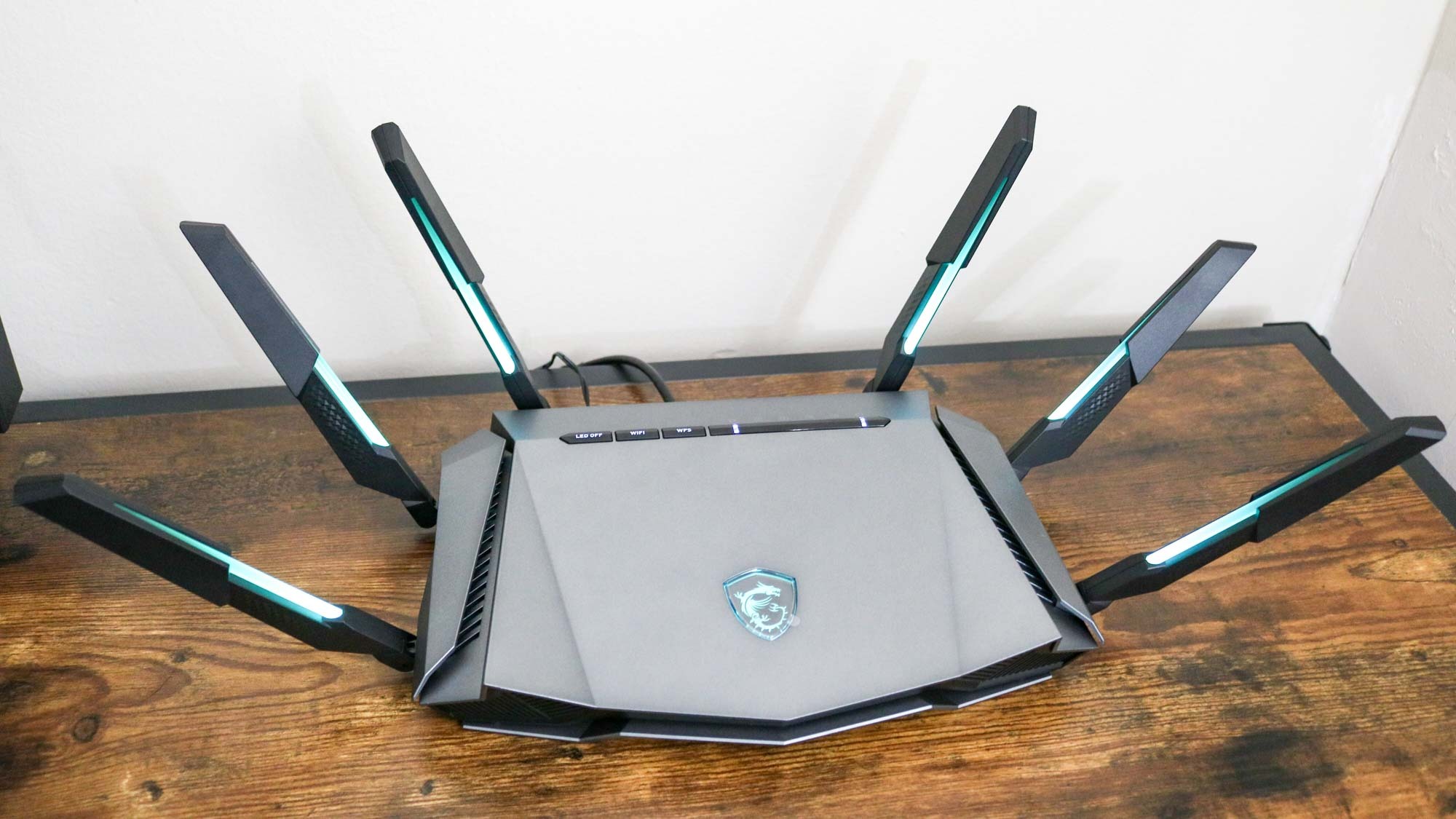
Specifications
Reasons to buy
Reasons to avoid
The MSI RadiX AXE6600 is a Wi-Fi 6E-powered gaming router that immediately stands out with its light-up antennas. Besides just looking cool, they actually serve a purpose since their color changes based on which Quality of Service (QOS) method is being used: green for AI, red for gaming, purple for streaming blue for work from home and orange for manual QOS settings.
In our testing, the MSI RadiX AXE6600 performed quite well at close distances reaching speeds of just over 1.4 Gbps at 15 feet. Middle distance performance was quite good too at 498 Mbps at 50 feet. However, at 75 feet speeds fell to 156 Mbps and at 90 feet, the router was offline. Like with other Wi-Fi 6E routers using the 6GHz band, you're going to want to keep the MSI RadiX AXE6600 close to your computer or game consoles for the best performance.
At the back of the MSI RadiX AXE6600, there are four gigabit Ethernet ports as well as a multi-gig, 2.5G one. You have the option to use one of the gigabit Ethernet ports to connect to your cable modem or you can use the 2.5G one. There's also a USB 3.0 port for sharing data from a flash drive or external hard drive across your network. The MSI RadiX AXE6600 may not be the fast Wi-Fi 6E gaming router we've tested but it comes in at a much cheaper price than the competition.
Read our full MSI RadiX AXE6600 review.
The best gaming router for Wi-Fi 7
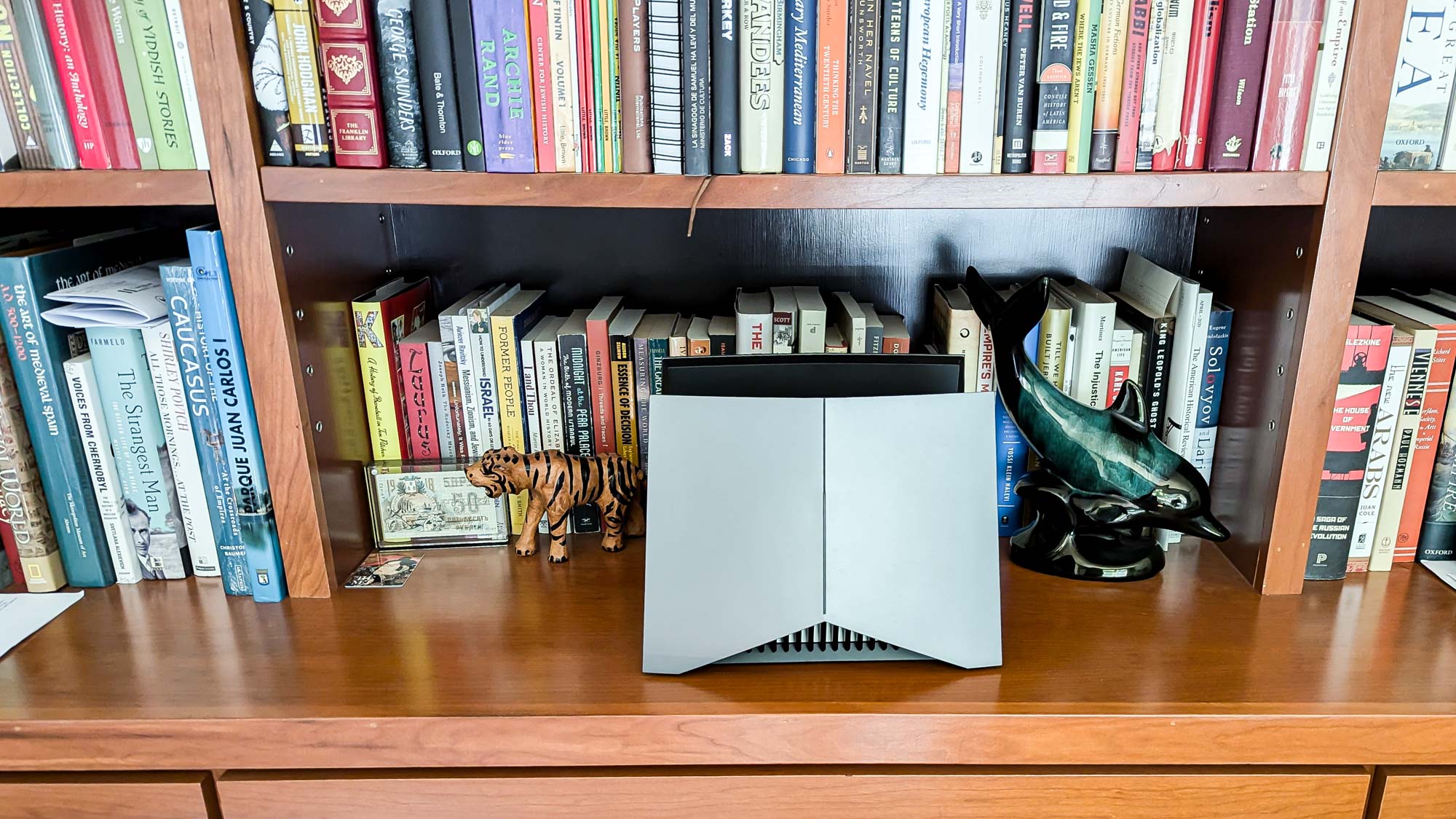
Specifications
Reasons to buy
Reasons to avoid
The TP-Link Archer GE800 is a Wi-Fi 7-powered gaming router with a futuristic design and RGB lighting effects that offers low latency, excellent speeds and even a dedicated gaming port. At 11.5 x 9.0 x 7.4 inches, it is on the larger side, though most gaming routers tend to be bigger than traditional Wi-Fi routers or mesh routers.
The wings on either side of the TP-Link Archer GE800 house its eight antennas. By leveraging 320 MHz data channels, 4K QAM modulation and other Wi-Fi 7 features, it delivers excellent wired and wireless speeds. In our testing at 15 feet, it reached a max speed of 1.322 Gbps with a total range of 105 feet.
The TP-Link Archer GE800 is well-suited for multi-gig internet plans with four 2.5 Gbps Ethernet ports, two 10 Gbps ones and even an SPF+ optical link for fiber connections. You also get a USB 3.0 port for moving data from a flash drive or external hard drive across your network.
As this is a gaming router after all, we were quite impressed by its bevy of gaming features including the dedicated Game Mode button on the front, located right next to the button to control the Archer GE800’s RGB lighting effects. However, there’s also a Game Detector to test your real-time ping for individual games and game port forwarding. The fact the Archer GE800 has an Ethernet port solely dedicated to gaming was the icing on the cake for us.
Read our full TP-Link Archer GE800 review.
The best gaming router for mesh
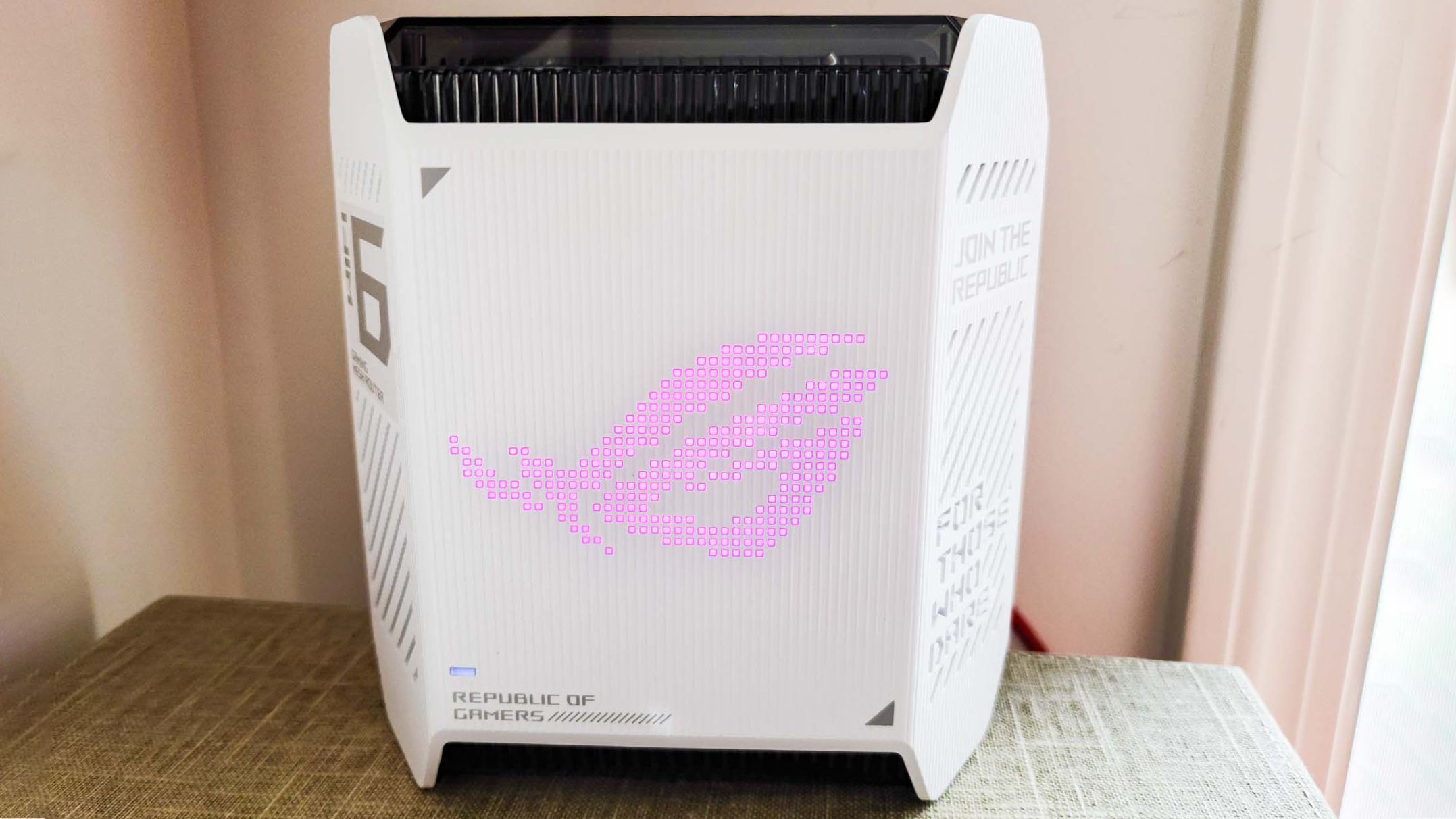
Specifications
Reasons to buy
Reasons to avoid
The Asus ROG Rapture GT6 is a mesh router designed specifically for gamers that pushes Wi-Fi 6 to the max. Part of Asus' Republic of Gamers line, this mesh Wi-Fi system is available in a two-pack and can cover up to 5,800 square feet with a strong Wi-Fi signal.
Unlike other mesh routers that are meant to be tucked away and hidden out of sight, the Asus ROG Rapture GT6 stands out from the crowd due to its trapezoidal shape and built-in RGB lighting. Under the hood, the GT6 has an array of nine antennas for better coverage and on the back, there's a 2.5 Gbps Ethernet port as well as three gigabit Ethernet ports and a USB 3.2 port for accessing data from a flash drive or portable hard drive across your network.
Since the GT6 doesn't ship with Wi-Fi 6E, it's limited to a single 2.4 GHz band and a pair of 5 GHz bands. However, besides using 160 MHz data channels and beamforming, it creates 2X2 2.4GHz streams as well as 4X4 5GHz transmissions to reach a maximum throughput of 10.1 Gbps. In our testing, we were pleasantly surprised by how the GT6 was able to meet the Orbi RBK852 in terms of raw performance while also being cheaper.
Read our full Asus ROG Rapture GT6 review.
The best gaming router for Wi-Fi 6
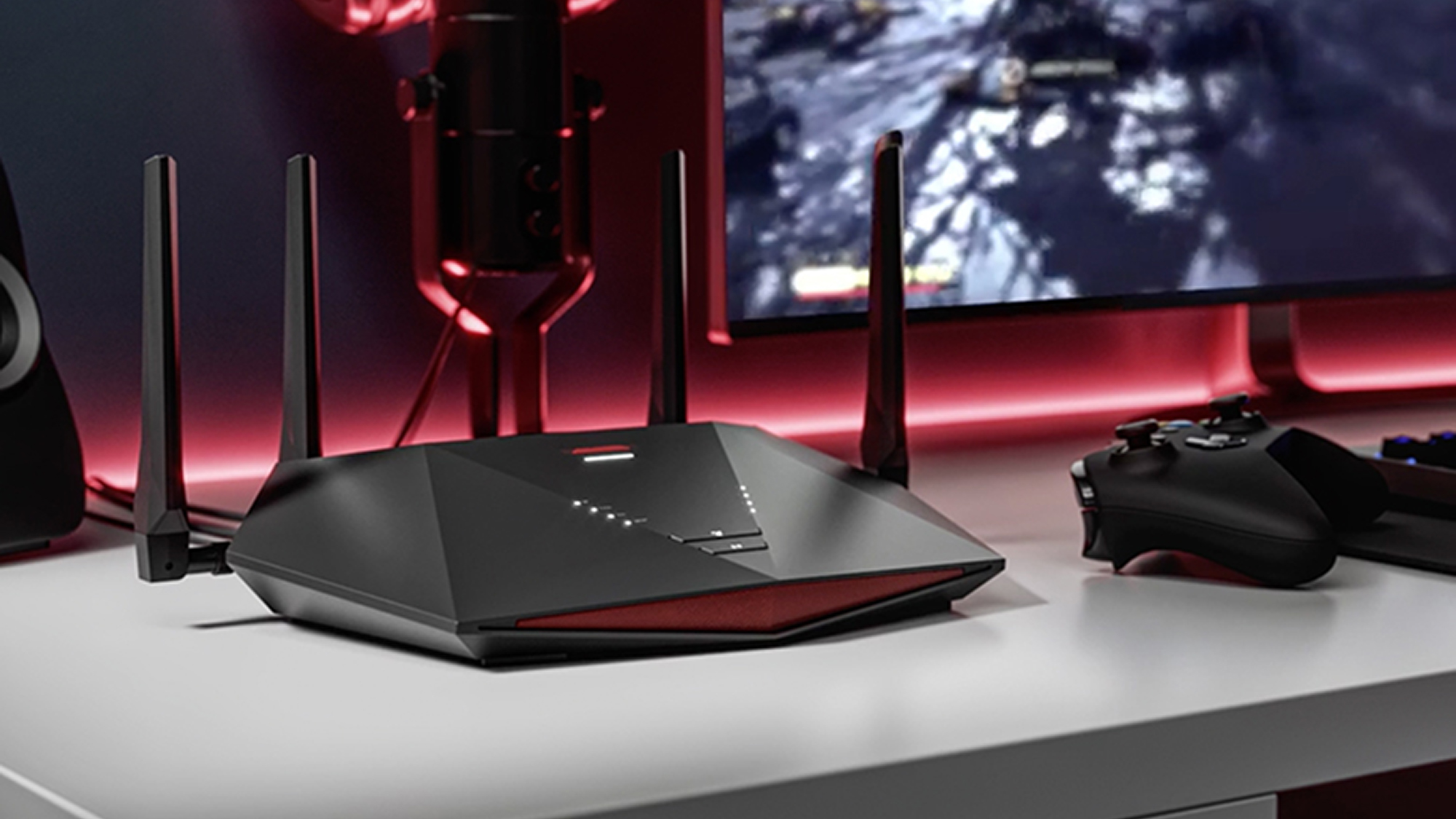
Specifications
Reasons to buy
Reasons to avoid
The Netgear Nighthawk Pro Gaming XR1000 is powerful, with Wi-Fi 6 speeds that goes above and beyond most other gaming routers with excellent speeds and top-shelf gaming enhancements. The Netgear's high-throughput, low-latency design is packed with customization options and built-in security, providing protection against hackers along with superb Wi-Fi 6 performance.
It's also great for slightly larger homes, with a range of 105 feet, easily covering that extra room that other routers can't quite reach. If your current router isn't keeping up with your gaming abilities, the XR1000 is one of the best gaming routers we've ever seen.
With an entire dashboard of customization tools, you can optimize the router's performance in a dizzying number of ways, from CPU usage monitoring to stats that identify what apps and devices are using the most data and connection tools that let you adjust connections by ping rates and location.
Read our full Netgear Nighthawk XR1000 review.
The best gaming router for dual-band Wi-Fi 7

Specifications
Reasons to buy
Reasons to avoid
If you want most of the Wi-Fi 7-powered features of the TP-Link Archer GE800 with the range and whole home connectivity of the Asus ROG Rapture GT6, then the MSI Roamii BE Lite is the perfect compromise between the two. This dual-band Wi-Fi 7 mesh kit comes in a two-pack for a very affordable price. To get the Roamii BE Lite to just $300, MSI had to make a few cuts though and that’s where the dual-band bit comes in.
Unlike with the Archer GE800 or even the Wi-Fi 6E powered Asus GT AXE11000, you won’t be able to use the faster 6 Ghz band, just the 5 and 2.4 Ghz ones. If you have gigabit internet or lower, this mesh kit will let you take full advantage of the internet speeds you pay for, though it does have a 2.5G input port for some extra breathing room. In our testing at 15 feet, it reached a max speed of 970 Mbps with a total range of 105 feet.
As for its design, MSI did things a bit differently with the Roamii BE Lite. Instead of the cylindrical shape used in mesh routers from TP-Link and now Netgear, the Roamii BE Lite is triangular with a glossy seven on its front to let you know that this is a Wi-Fi 7-powered mesh kit. Around back, you have that previously mentioned 2.5G WAN port along with two gigabit Ethernet ports for connecting your wired devices.
In terms of extras, you get free, built-in security software powered by Trend Micro which also includes parental controls and the ability to create separate networks for your different devices. Another nice touch is the fact that MSI throws in a wall-mounting kit with the Roamii BE Lite if you want to put this mesh router higher up where its signal will have an easier time reaching your devices. When it comes to Wi-Fi 7 features, you get access to the new wireless standard’s best ones like Multi-Link Operation (MLO), 4K QAM and MU Mimo. However, if you want a ‘true’ Wi-Fi 7 mesh kit, MSI is releasing the Roamii BE Max and Pro later this year.
Read our full MSI Roamii BE Lite review.
Gaming router vs Wi-Fi router
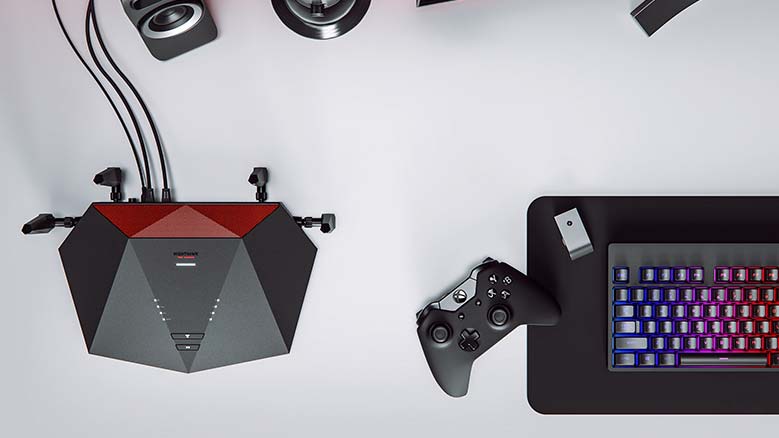
What exactly makes a gaming router different from a standard Wi-Fi router? They both serve up wireless internet for your computers, phones and other gadgets, and they’re based on the same wireless standards. So what else do gaming routers bring to the table?
Throughput and Lag: The biggest difference is that gaming routers are built for both higher bandwidth (more important for games) and low latency. Besides letting more data flow in and out of your home, gaming routers allow data to flow faster in both directions. The result is lower ping times (the time it takes for a signal to travel from your gaming PC or consoles to the game servers” and a more responsive experience in online games.
Hardware: This enhanced performance is the direct result of better hardware. A router is essentially a specialized computer that manages all of the connections and information packets on your home network, sorting and shifting them as necessary to connect your different devices. Just like with any computer, you’ll get faster performance with better components. Gaming routers offer better-than-average processing power and also feature larger built-in memory to allow for faster performance, letting a router manage more connections while also keeping latency to a minimum.
Bandwidth management: Today’s homes are filled with all manner of connected devices, from PCs and game consoles to smart TVs and smartphones, and even refrigerators and other appliances. This makes for a crowded house full of bandwidth-hungry gadgets. All modern routers include some level of automatic bandwidth prioritization, so that your Netflix watching isn’t slowed down when another device needs to download an update. However, gaming routers take this a step further with Quality of Service (QoS) features.
QoS features include more direct control of bandwidth management and let you prioritize specific devices (like your gaming PC) based on what activity or service is being used. They can also automatically re-adjust for time of day, number of devices and more.
If the average router is similar to an automatic transmission that can handle stop and go traffic without much hassle, then a gaming router is like a manual transmission which puts more control in the driver’s hands. Not everyone requires this increased level of control but those who do, swear by it.
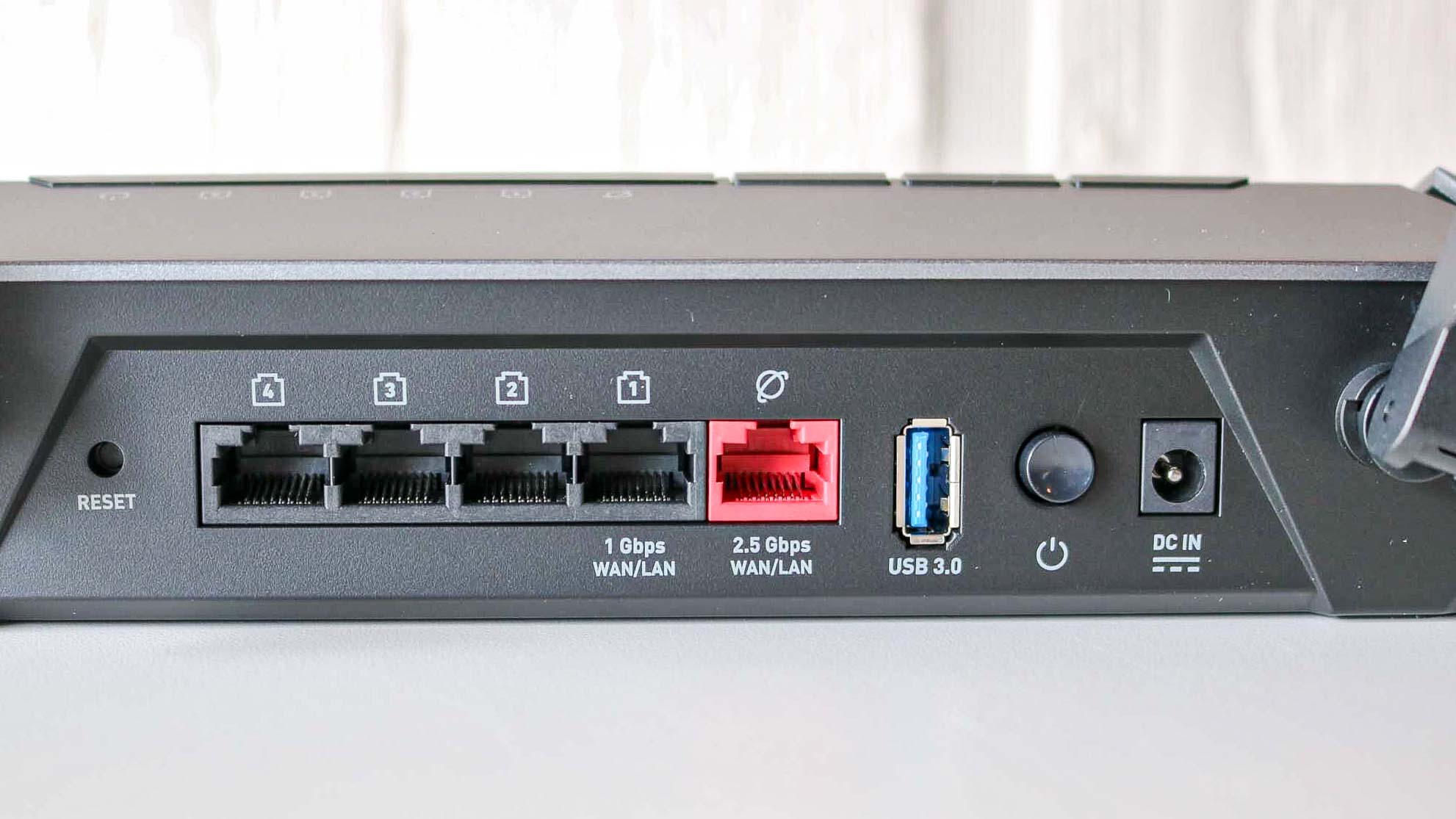
Connectivity: A good gaming router is also built to handle faster connections and more of them. This simply means more wired LAN ports that provide faster speeds than Wi-Fi, more support for Gigabit speeds and higher and extra antennas to push Wi-Fi farther to handle more devices.
Combine all of these distinctive features and advanced capabilities and it’s pretty obvious why a dedicated gaming router is a smart choice for those that want a competitive edge when playing games online or just better support for a house filled with connected devices.
How to choose the best gaming router for you
While the features mentioned above can give you a pretty good idea of what to look for in a gaming router, there are a few specific pieces of advice you’ll want to keep in mind when shopping for a new one.
Speeds and standards: The best gaming routers generally utilize the latest and greatest technologies and the biggest example of this is in Wi-Fi standards. The newest models use Wi-Fi 6E or Wi-Fi 6, which are both substantially faster than the previous 802.11ac standard (retroactively named Wi-Fi 6).
If you want to improve your gaming experience even on a slower broadband connection, you might be able to save a bit by choosing an older model with 802.11ac, but most will want to get the best connectivity they can, and should pay more for Wi-Fi 6 or Wi-Fi 6E. (Learn more in our article Wi-Fi 6 vs Wi-Fi 6e: What's the difference?)
You’ll also want a router that can take full advantage of your broadband connection and gigabit-speed internet has become increasingly common though there’s also multi-gig internet which is significantly more expensive. If you’ve got a connection that offers gigabit service, you’ll need a router equipped with gigabit ethernet to actually take advantage of those speeds. (Learn more in our article What Is Gig-Speed Internet?)
Features: Beyond these basics, it’s all about the features. Look into the details of each router’s QoS tools in our product reviews, look at the connectivity each device offers – both in Wi-Fi range and physical ports – and find the mix of features that seem to best match the level of tinkering and control you want in a gaming router.
Price: The last big consideration is price. Gaming isn’t a cheap hobby, so the need to save a few bucks where you can is understandable. However, cutting too close to the bone will leave you stuck with subpar performance or missing features you may want.
On average, the top gaming routers cost more than a standard Wi-Fi router usually in the $300-$400 range. However, there are ways to save that won’t leave you with a less capable device. Older gaming routers that meet the necessary specifications should still satisfy your need for speed and features at a lower price. Also, don’t forget about sales events, which can bring big savings.
How we test gaming routers
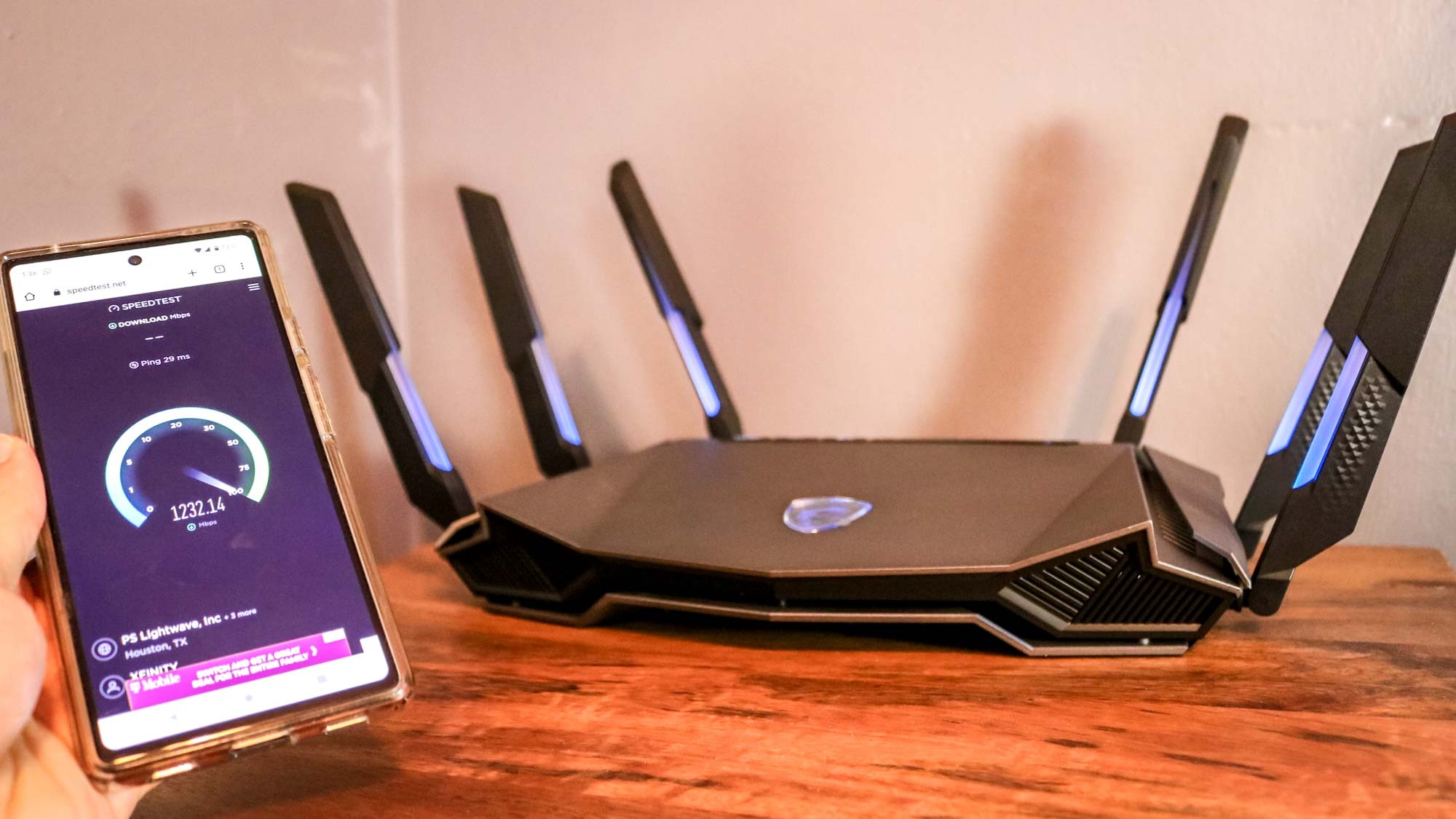
We test every router we review - gaming or otherwise - using a collection of benchmark tests in our Utah and New York facilities. During these tests, we use Ixia’s IxChariot software to measure how much data a router can move at several distances, confirm true usable Wi-Fi range and generally determine how well each device performs. We also test how well each router can transmit and receive signals through drywall, brick, concrete and even metal walls as well as how each handles coverage in a two- or three-story home.
Gaming routers get additional testing though including real-world gaming performance, measuring latency and trying the various settings and features available on the device, including Quality of Service (QoS) and game enhancement features. Other factors we use when evaluating routers include ease of setup and use, software features and available ports.
Want to find out more? Check out our guide on how we test Wi-Fi routers and our more general how we test page for Tom's Guide.
Check out all of our home networking coverage:
Best Wi-Fi routers | Best mesh routers | Best Wi-Fi 6 routers | Best Wi-Fi extenders | Best powerline extenders | Best cable modems
Sign up to get the BEST of Tom's Guide direct to your inbox.
Get instant access to breaking news, the hottest reviews, great deals and helpful tips.

Anthony Spadafora is the managing editor for security and home office furniture at Tom’s Guide where he covers everything from data breaches to password managers and the best way to cover your whole home or business with Wi-Fi. He also reviews standing desks, office chairs and other home office accessories with a penchant for building desk setups. Before joining the team, Anthony wrote for ITProPortal while living in Korea and later for TechRadar Pro after moving back to the US. Based in Houston, Texas, when he’s not writing Anthony can be found tinkering with PCs and game consoles, managing cables and upgrading his smart home.
